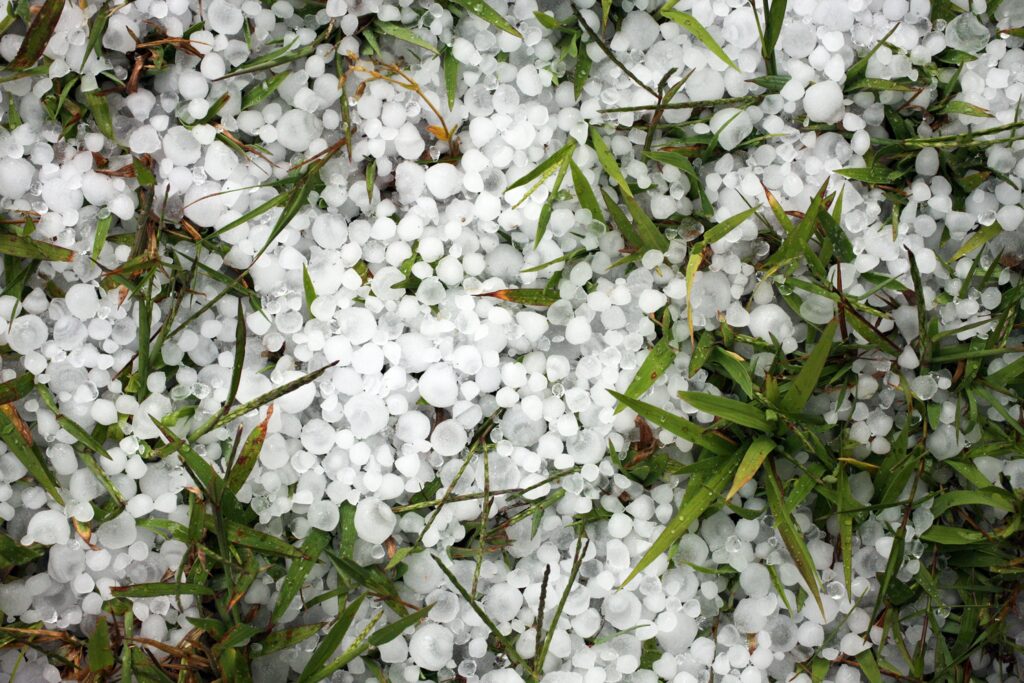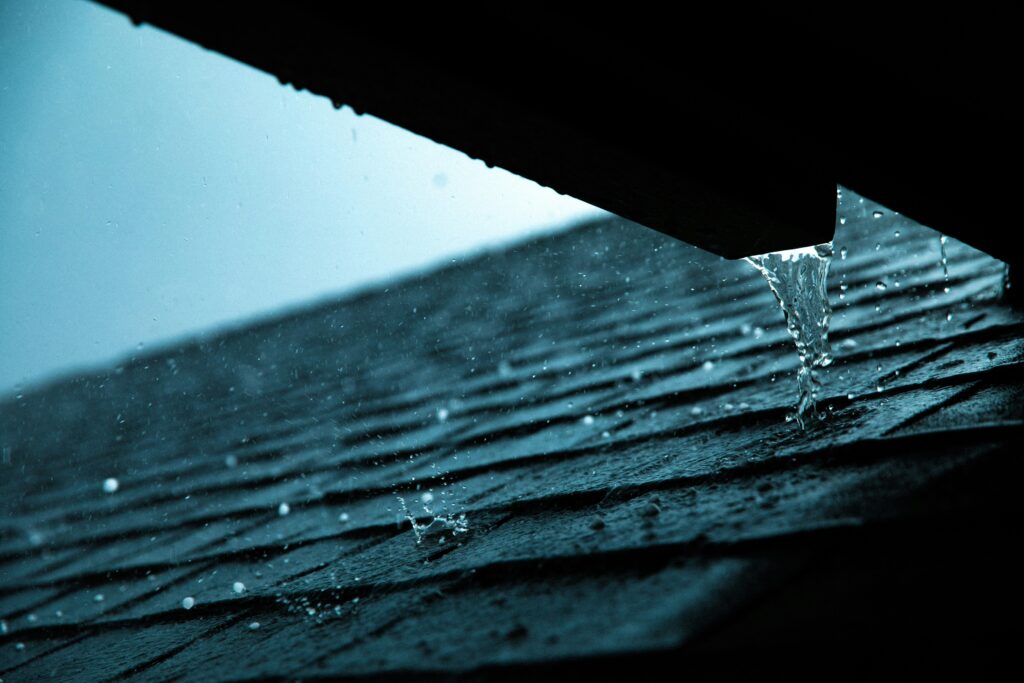Hailstorms are a frequent and destructive weather event in Colorado and often cause significant damage to homes, vehicles and other property. Navigating the insurance claims process after such an event can also be daunting. This guide aims to help Colorado homeowners like you understand the insurance claim process and advise you on what to be on the lookout for as you work with your insurance company on settling your claim. Specifically, we’ll discuss:
- The types of damage caused by hailstorms and who pays for it
- Common hail damage exclusions Colorado homeowners need to watch for in their insurance policies
- What to do if you suspect hail damage
- Proactive tips for protecting your property during hail season
If you have questions or need immediate support for your hail damage insurance claim, contact our team of experienced insurance law attorneys at Kandell, Kandell & Petrie today. One of our Denver claims advisors is standing by to help you get started.
What to Know About Hail Damage Insurance Claims in Colorado
Summer is the season of hail in Colorado, and hail do we get. Colorado is among the most hail-prone states in the U.S. primarily due to the state’s high elevation. The Front Range and areas eastward (including the Denver metro) are located in what’s known as “hail alley” and commonly experience several significant hail events each year. For homeowners, this can spell major damage to our properties and give rise to ever-increasing insurance premiums. Unfortunately, it also leaves room for insurance companies to engage in bad faith practices and try to deny or underpay claims.
Types of Damage Caused by Hail
Hail storms cause billions of dollars worth of damage to homes, vehicles and other property, and insurance companies are on the hook for paying for most of it. Hail damage insurance claims can be filed for the following types of damage:
- Roof damage
- Chimney and vent damage
- Siding damage
- Gutter damage
- Window and screen damage
- HVAC system damage
Repairing damage to these structural elements is critical to preventing further damage to your home. The biggest reason for repairing damaged property has to do with water damage. A hail-damaged roof is vulnerable, and over time (sometimes sooner rather than later), these vulnerabilities make themselves known in the form of major leaks. If you suspect hail damage to your roof or siding, don’t delay in getting it inspected – and fixed!
Paying for Hail Damaged Property
The cost of repairs and replacement for hail-damaged items can be steep depending on the amount of damage you have and the type of materials needing replacement. Ensuring you have adequate homeowners insurance to cover hail damage is imperative, especially if you live in Colorado.
Routinely review your insurance policy so you know what your deductible is (often there are separate wind and hail deductibles) and understand any policy exclusions. Being informed about the details of your policy will help prevent misunderstandings with your insurance company and will alert you to any signs of malpractice.
Common Hail Damage Exclusions Colorado Homeowners Need to Look Out For
Repairing hail-damaged property costs Colorado homeowners and insurance companies billions of dollars. With costs this steep, it’s not surprising that some insurance companies are trying to sneak through loopholes and find other ways to limit payouts to their insured.
One way some companies are trying to limit coverage and reduce claim payouts is through policy exclusions. For hail damage claims in particular, there are a few common exclusions Denver homeowners need to be aware of.
Cosmetic Damage Exclusion
One type of endorsement some insurance companies are including in their policies is referred to as a cosmetic damage exclusion. As the name suggests, damage that is deemed “cosmetic” – by that insurers mean superficial damage that alters the appearance of the roof but does not damage the function of the roof as a moisture barrier – is excluded from coverage.
Hail dings on a metal roof or dents on vent flashing might be considered cosmetic damage as they may allegedly only affect the appearance of the roof. This type of damage would therefore not be covered by a policy that has a cosmetic damage endorsement.
Matching Exclusion
Another policy exclusion we see in Colorado is called a matching exclusion. This type of clause allows insurance companies to replace only the damaged portion of a property without matching the undamaged areas. For example, if just one side of your house sustains hail damage or only a portion of your roof needs to be replaced, the company is not required to replace the other sides to match. This can be frustrating for policyholders because they’re left with either a home with mismatched materials or additional out-of-pocket expenses to achieve a uniform look.
Pre-existing Damage Exclusion
Lastly, if you live in a high-occurrence hail area like we do here in Colorado and there have been multiple storms in recent years but you haven’t made a claim in that time, an insurer may claim that it’s impossible to know which historical hail storm caused this particular damage and use that as an excuse to deny or underpay your claim. This can be even more problematic if you’ve changed insurance companies and it might be someone else’s fault (this is another key reason why you should regularly document the condition of your roof.
Additionally, your insurance provider may claim prejudice from failure to timely report a claim if they’ve insured you for several years because they may say they’ve been deprived the opportunity to investigate each storm’s possible damage during that time. In fact, a lot of policies actually require homeowners to report damage following a storm even if you don’t intend to make a claim.
Insurance policies will vary in their exclusions, so it’s critical to review your policy closely and ask questions about areas you don’t understand. Often policy language can be ambiguous, and this can lead to contention between insurers and their insured. At times like this, we advise speaking with an insurance law attorney to ensure you receive the rightful claim payout amount you are legally entitled to.
Think You Have Hail Damage? Here’s What to Do Next
One of the first things you should do after a storm clears out is assess any damage. Short of crawling up on the roof yourself, you’ll want to look for small dents in your siding, pings in your AC unit, and any other areas you can safely assess. When in doubt, it’s better to err on the side of having your property inspected by a professional. Here are some basic steps to take:
- Contact a roofing professional or public adjuster to inspect your property – Call in a professional to evaluate your property for damage. You can also call a licensed drone operator. They’ll look for signs of hail damage such as dents and dings as well as damaged windows, screens and outdoor furniture. If you’re unsure who to call, give our office a ring and we can offer a referral or recommendation.
- Document your damage – Your roofer will take photos of the damage, but you also should document affected areas that are within reach and take detailed notes about the extent of your damage. Be sure to write down the date and time of the hailstorm and if you made any immediate repairs to prevent further damage, such as boarding up broken windows or putting down tarps over damaged roof areas (keep receipts too).
- Contact your insurance company – If damage has been identified, contact your insurance company to start the claims process. They’ll send out an adjuster to inspect your property. Be sure to also review your insurance policy so you’re aware of coverage limits, deductibles (many providers require a separate wind and hail deductible), policy exclusions, and the process for filing a hail damage claim.
- Obtain competing property damage estimates – Simultaneously, it can be helpful to solicit additional bids to determine if your insurance company is acting fairly in their settlement. If the amount your insurer offers you is less than you’re seeing in other bids, it could be a sign they’re trying to underpay or deny your claim. Obtaining additional bids will also be helpful if you need to appeal your claim.
- Contact an insurance law attorney – Filing a hail damage claim in Colorado should be straightforward, but unfortunately, things can get complicated in a hurry. Your insurance company may try to deny or underpay your hail damage claim, or they may drag their feet and delay investigating or processing your claim. These could be instances of bad faith practices, and this type of behavior is against the law in Colorado.
Tips for Protecting Your Property During Colorado’s Hail Season
Hail season in Colorado runs from mid-April through mid-September. While many storms produce just small pebbles, still others can drop golf ball and baseball-size hail (in Denver, the largest stone to date was a whopping 5.25 inches in diameter) Remaining vigilant with maintenance can help minimize any damage you may sustain during one of the many hailstorms Coloradoans are likely to experience each year. Here are a few things you can do this hail season:
Proactive Tips for Protecting Your Property from Hail
- Inspect and maintain your roof, gutters and downspouts – An already damaged roof will not stand up well to another pummelling. Have your roof inspected regularly and take care of any damaged or vulnerable areas. Be sure also to clean out gutters and ensure downspouts are draining out and away from your home.
- Protect outdoor furniture and equipment – You don’t need to store outdoor equipment all the time, but you should have a place where they can go quickly if a storm is on the horizon. And if they can’t be covered or protected, at least try to anchor them down as many storms also come with strong winds.
- Consider your garden – Trim trees and shrubs to reduce damage from hail and wind, and consider moving plants indoors or under a shelter before hail comes through.
- Protect your vehicles – If you can’t park in a garage, research potential parking options so you can get your vehicles under cover prior to a storm.
- Review your insurance policy – This is a big one. Some insurance companies have added policy exclusions to limit or deny coverage on hail claims. Others also require a separate wind and hail deductible before coverage kicks in. Read through your policy, ask questions, and make sure you have adequate home and auto coverage to protect your property during a hail storm. If you have questions about your policy or insurance law in Colorado, contact us at KK&P Law Firm.
- Pay attention to the weather – Lastly, stay attuned to local forecasts and consider signing up for weather alerts. Weather patterns can change quickly. If a storm is coming, you’ll want to be able to act fast to protect your vehicle, any exposed property that can be sheltered, and yourself!
Taking proactive steps to protect your property during hail season can save you from significant damage and costly repairs, but if you do sustain hail damage, take these steps and call us at Kandell, Kandell & Petrie Law Firm for help navigating the insurance claims process in Colorado.
Contact Us at KKP Law Firm
At Kandell, Kandell & Petrie, we have more than 50 years of combined legal expertise in insurance law. We specialize in property insurance disputes in Colorado, Florida and Louisiana and are here to ensure you receive the relief you deserve for your hail damage insurance claim. If you have questions about bad faith demands in Colorado or need help managing the claims process, don’t hesitate to reach out to one of our Denver claims advisors.



